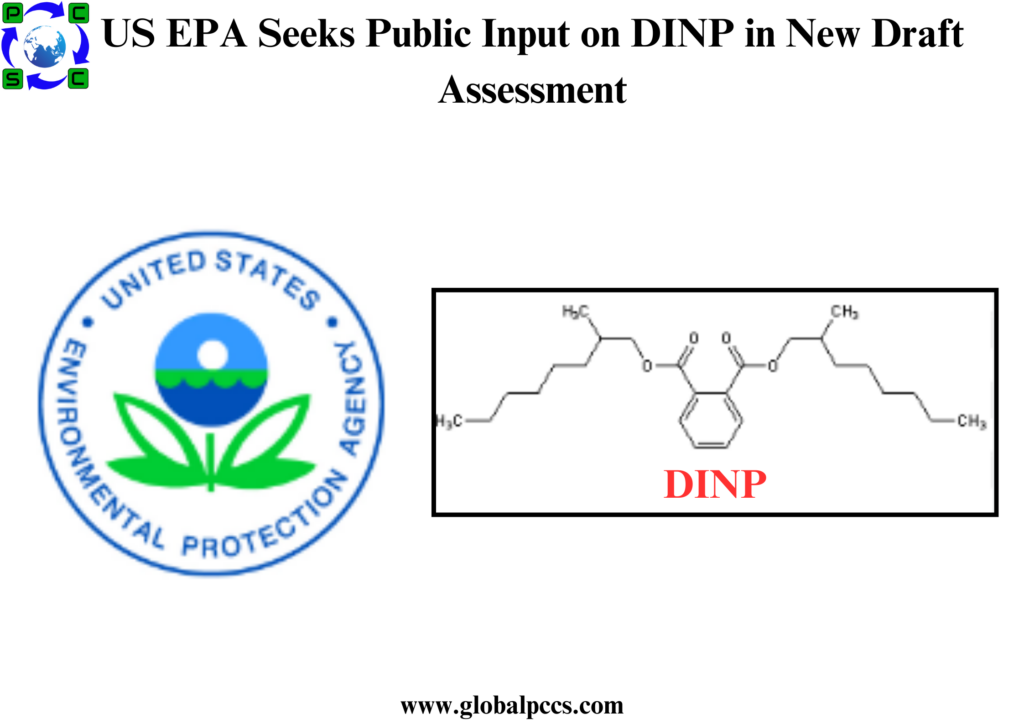 The U.S. Environmental Protection Agency (EPA), under the Toxic Substances Control Act (TSCA), has published a draft risk assessment for Diisononyl Phthalate (DINP) to evaluate its health and environmental risks under existing usage conditions. Preliminary results suggest potential health hazards, and public comments are welcomed through November 4, 2024.
The U.S. Environmental Protection Agency (EPA), under the Toxic Substances Control Act (TSCA), has published a draft risk assessment for Diisononyl Phthalate (DINP) to evaluate its health and environmental risks under existing usage conditions. Preliminary results suggest potential health hazards, and public comments are welcomed through November 4, 2024.
DINP and Diisodecyl Phthalate (DIDP), commonly used as plasticizers in polyvinyl chloride (PVC), are prevalent in various consumer and industrial products. DINP is known for its low water solubility and persistence in anaerobic environments. It tends to accumulate on indoor airborne particles, extending its presence. Key health risks include liver toxicity and developmental issues, notably affecting androgen levels and causing liver damage.
Draft Risk Evaluation for DINP
According to the EPA, DINP is used primarily as a plasticizer to manufacture flexible polyvinyl chloride (PVC). It is also used to make building and construction materials; automotive and fuel products; and other commercial and consumer products, including adhesives and sealants, paints and coatings, and electrical and electronic products. EPA notes that there are other DINP uses that are generally excluded from TSCA, such as personal care products, cosmetics, and food contact materials, and states that it did not evaluate risk associated with these uses.
EPA states that workers may be exposed to DINP when making products containing DINP or otherwise using DINP in the workplace. According to the EPA, when manufactured or used to make products, DINP can be released into the water, where most of it will end up in the sediment at the bottom of lakes and rivers. If released into the air, it will attach to dust particles and then be deposited onto land or into water. Indoors, DINP has the potential over time to come out of products and adhere to dust particles that could be inhaled or ingested.
EPA preliminarily determined that one consumer use of DINP contributes significantly to unreasonable risk: the use of DINP in floor coverings and construction and building materials covering large surface areas, such as vinyl flooring, in-place wallpaper, and carpet backing. According to EPA, this use significantly contributes to the unreasonable risk of DINP to infants, toddlers, and preschool children under the age of five to dust containing DINP that migrated from these materials via the air, direct contact, or both.
EPA states that the two worker uses that it preliminarily determined contribute significantly to the unreasonable risk to workers involved unprotected workers using spray adhesives and sealants or paints and coatings that contain DINP with high-pressure sprayers. According to the EPA, using these sprayers could create high concentrations of DINP in mist that an unprotected worker could inhale. EPA notes that it was not able to identify products containing DINP that are currently used in high-pressure spray applications “and expects that public comments on this draft will help address this uncertainty.”
EPA did not evaluate uses and potential exposure pathways that are not, by statute, covered by TSCA, such as food packaging. EPA notes that past assessments, including the U.S. Consumer Product Safety Commission’s (CPSC) risk assessment found that DINP exposure comes primarily from diet for women, infants, toddlers, and children. EPA states that “[i]t is possible that DINP could pose risks to human health through uses or exposure pathways that are not regulated under TSCA.” While the draft risk evaluation preliminarily concludes that only three TSCA conditions of use (COU) significantly contribute to the draft unreasonable risk finding for DINP, “this conclusion cannot be extrapolated to form conclusions about uses of DINP that are not subject to TSCA, and that EPA did not evaluate.”
Request and Response
On May 24, 2019, ExxonMobil Chemical, Evonik, and Teknor Apex, via the ACC HPP, requested an EPA risk assessment for DINP and DIDP. The EPA is now seeking feedback during this public comment period on DINP’s exposure analysis and its integration with peer-reviewed data, focusing on environmental emissions, occupational and consumer exposure, and potential health and environmental impacts.
EPA states in the Federal Register notice that because many of the DINP technical support documents have undergone public comment and are currently undergoing external peer review, “input on the following is of particular interest”:
- Sections 3, 4, and 5 of the draft risk evaluation for DINP
- Draft environmental release and occupational exposure assessment for DINP
- Draft consumer and indoor exposure assessment for DINP
- Draft environmental media and general population screening for DINP
- Draft environmental exposure assessment for DINP
- Whether high-pressure spray applications of DINP-containing adhesives and sealants and paints and coatings are currently in use in industrial settings or may be used in the future due to changing industrial practices.
Next Steps
After the risk assessment, EPA will determine if DINP poses unreasonable health or environmental risks under its current use. If risks are identified, EPA will quickly move to risk management, potentially imposing regulations on the chemical’s production, handling, distribution, use, or disposal to mitigate these risks.








 Authorised IMDS & CDX Training & Consulting partner for
Authorised IMDS & CDX Training & Consulting partner for






